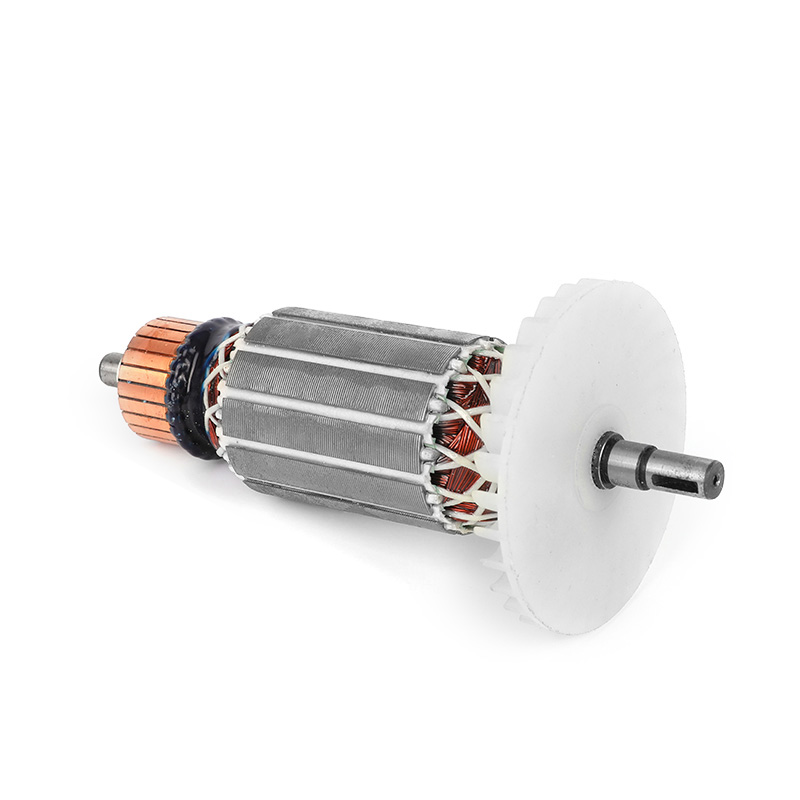- Home
- Products
- About Us
- Application
- News
- Contact Us
Web Menu
- Home
- Products
- About Us
- Application
- News
- Contact Us
Product Search
Exit Menu
How to Test Armatures for Power Tool Performance?

The armature is a critical component in electric power tools, responsible for converting electrical energy into mechanical motion. Over time, wear or damage can reduce a tool's efficiency or even cause failure. Testing armatures for power tool performance is essential for maintaining reliable operation and ensuring safety.
Understanding the Armature's Role
An armature is the rotating part of an electric motor. It consists of windings, a core, and a commutator, all of which work together to generate torque. In power tools, a damaged or worn armature can cause to reduced speed, overheating, or electrical problems. Before testing, it is important to understand the specific type of armature in the tool and its function within the motor. This knowledge helps identify potential issues during inspection.
Visual Inspection
Thestep in testing an armature is a thorough visual inspection. Look for signs of physical damage, such as burned windings, broken wires, or worn commutator segments. Accumulated dirt or debris can also affect performance and should be cleaned carefully. A visual inspection can reveal obvious defects that may compromise the armature's operation, helping determine whether further testing is necessary.
Electrical Testing
Electrical tests are crucial for evaluating an armature's performance. One common method is using a multimeter to measure resistance across the windings. Variations in resistance can indicate short circuits or breaks in the windings. Another technique is the growler test, which helps detect magnetic inconsistencies in the core. By passing current through the armature and observing the response with a test indicator, technicians can identify potential faults that might affect performance.
Mechanical Testing
In addition to electrical checks, mechanical testing can provide insights into an armature's condition. Spin the armature manually to ensure smooth rotation without excessive friction or wobbling. Any unusual noise or uneven movement may indicate misalignment, bearing issues, or a bent shaft. Evaluating the armature mechanically helps detect problems that electrical tests alone might miss, ensuring comprehensive assessment.
Testing in Operational Conditions
Whenever possible, testing the armature under real operational conditions is valuable. Installing it in the power tool and running the motor at various loads can help observe performance metrics such as speed, torque, and temperature. Monitoring these parameters allows technicians to verify that the armature functions properly under actual working conditions. Observing tool behavior also helps confirm whether any repairs or replacements are necessary.
Maintenance and Replacement Considerations
Testing armatures is not only about diagnosing problems but also about maintaining the tool's efficiency. Regular inspections and tests can extend the life of power tools by identifying issues early. When a fault is detected, using quality replacement parts ensures the motor continues to operate reliably. Sourcing armatures from trusted suppliers for power tools minimizes the risk of recurring problems and maintains consistent performance.
Testing armatures for power tool performance involves visual inspection, electrical and mechanical checks, and operational testing. Each method provides valuable information about the armature's condition, helping identify wear, damage, or potential faults. By performing these tests regularly and addressing issues promptly, users can maintain efficient, reliable, and safe operation of their power tools. Proper evaluation of the armature ensures that the tool performs consistently, supporting both productivity and safety in any workshop.
-
Add: 1st Floor, No. 2, Huanan Road, Zhengcun, Economic Development Zone, Yongkang City, Zhejiang Province, China
-
Tel: +86-0579-87133113
-
E-mail: [email protected]

 English
English русский
русский Español
Español